White House – Pre-Tubed Wood Pen Blanks
White House – Pre-Tubed Wood Pen Blanks
4.0 / 5.0
(3) 3 total reviews
Prodcut Base price with no add-on options
In stock
Product Price with any add-on options selected
Couldn't load pickup availability
Blanks are made from wood removed from the White House during renovations and reconstruction events from three presidents' terms.
____________________________________________________________________________
Blanks are sold à la carte. Select your blank material and then select your pen tube size.
Click here for Jr Cap Label tubes!

Click here for Jr Cap Stamp tubes!

____________________________________________________________________________
All wood pre-tubed blanks are made to order.
Please allow up to two weeks for pre-tube blanks.
Pre-tubed blanks are wood glued to the pen tube and cast in white Alumilte resin to fill in any sliver cracks. Wood is held to the tubes with tiny rubber bands for gluing and resin casting.
____________________________________________________________________________All blanks come with one COA per blank. COAs are 4" x 6" card stock with foil embossed COA seal.
____________________________________________________________________________
White House embedded blanks are available from Stadium Pen Blanks in the following tube sizes: Jr Caps, Jr Lowers, Sierra Clones, Bolt Action, and Custom Size Tubes.
The White House original construction was completed in 1800 with John Adams as its first resident. In 1814, during the War of 1812, the mansion was set ablaze by the British Army in the Burning of Washington, destroying the interior and charring much of the exterior. Reconstruction began almost immediately, and President James Monroe moved into the partially reconstructed Executive Residence in October 1817.
The wood Stadium Pen Blanks has available is original to 1817 and removed during the Truman presidency renovation.
Harry Truman Reconstruction of 1950
In 1948, after the Truman Balcony was installed, an engineering survey found the main body of the mansion to be structurally unsound. Floors no longer merely creaked, they swayed. A -thorough examination found wooden beams had been weakened by the cutting and drilling for plumbing and wiring over the past 150 years. The addition of the 1927 steel roof and full third floor added weight the building could no longer handle. Declared to be in imminent danger of collapse, the reconstruction began in 1948.
Share
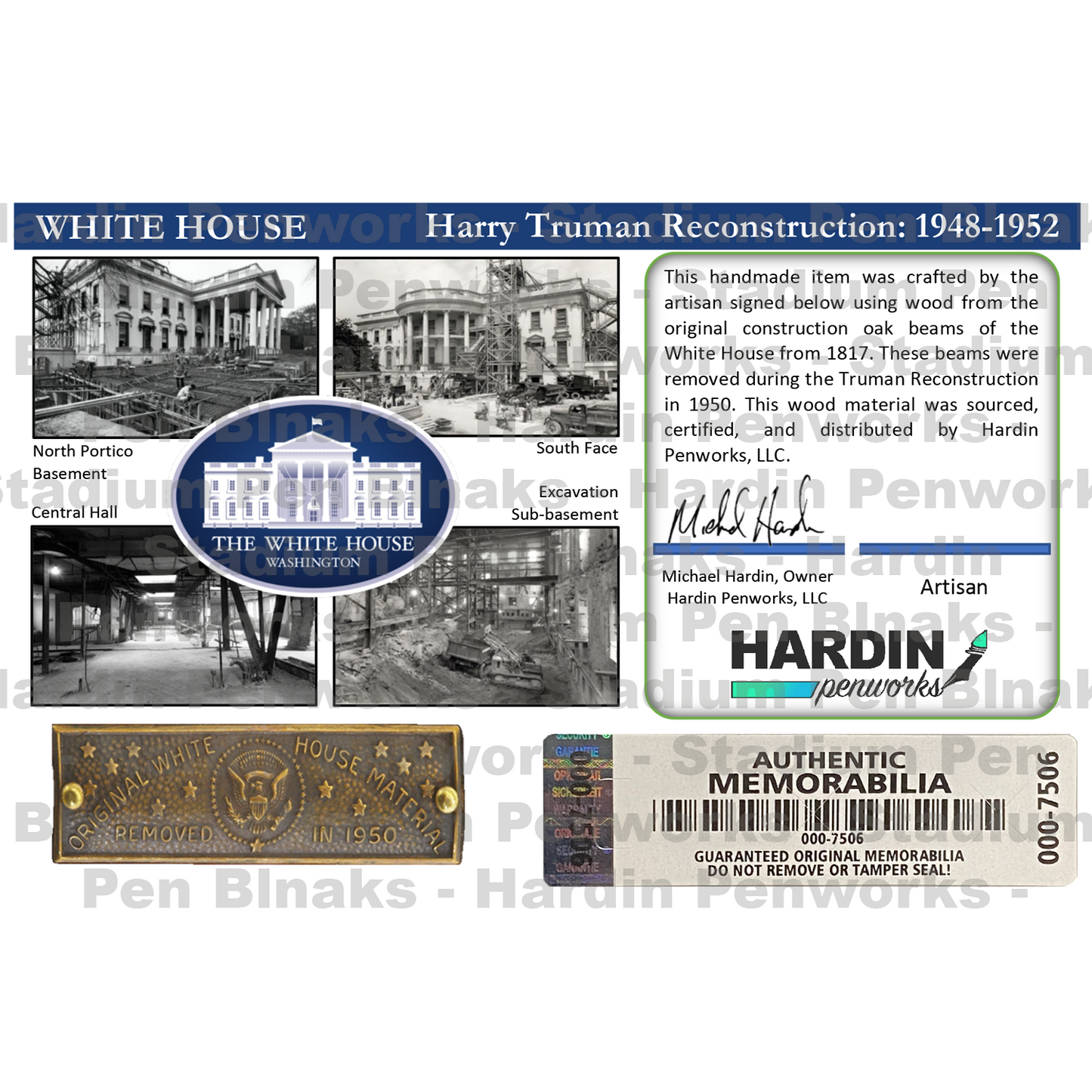
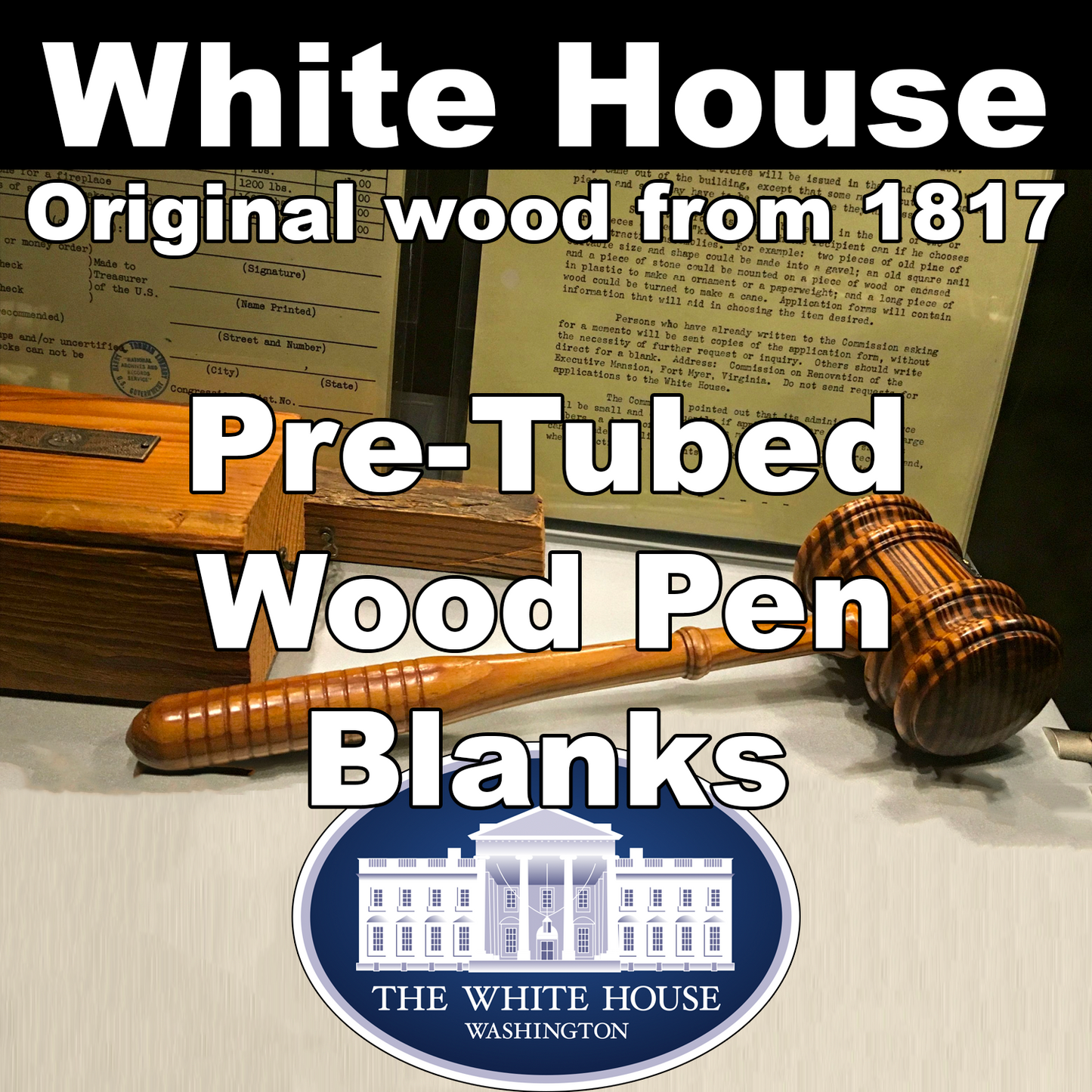
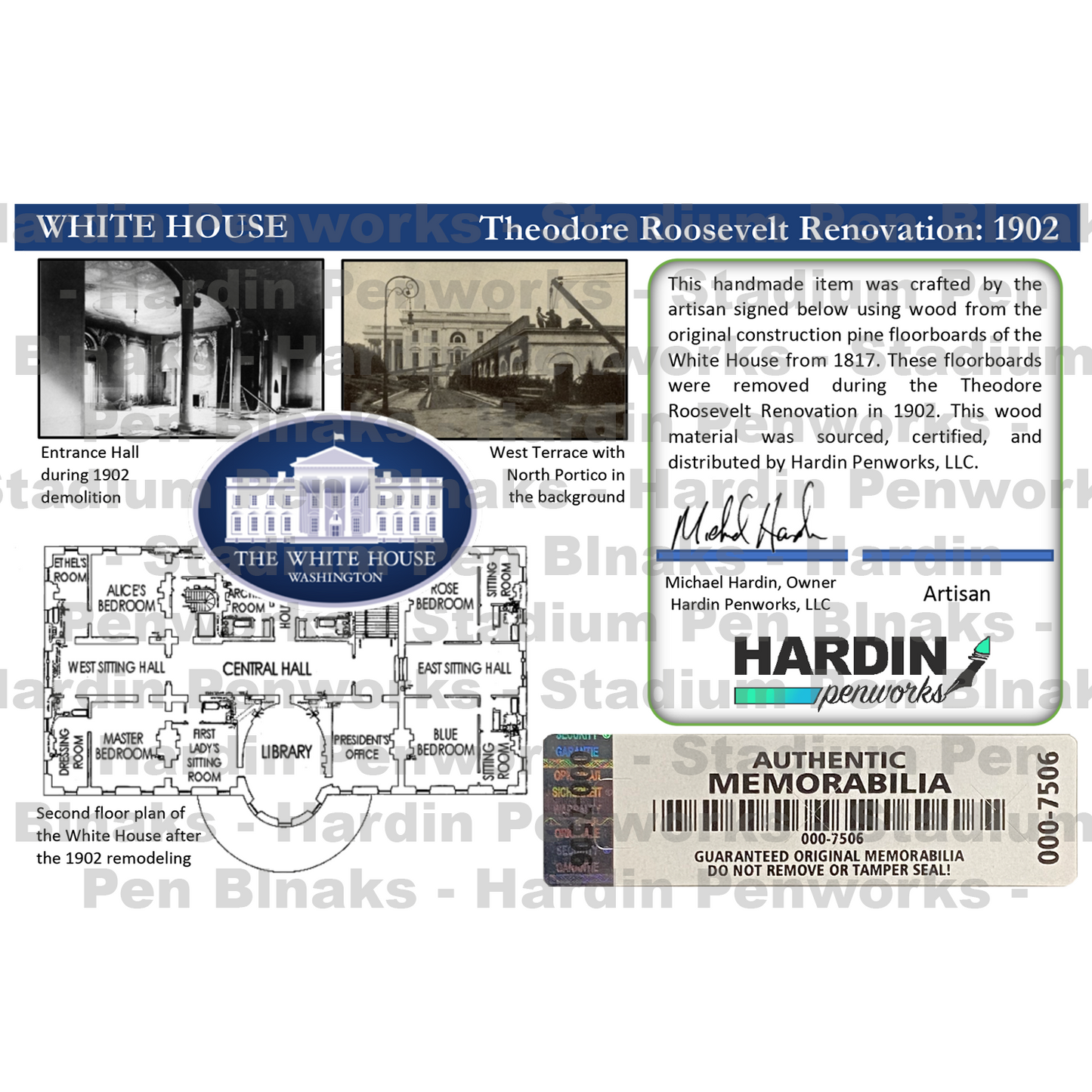
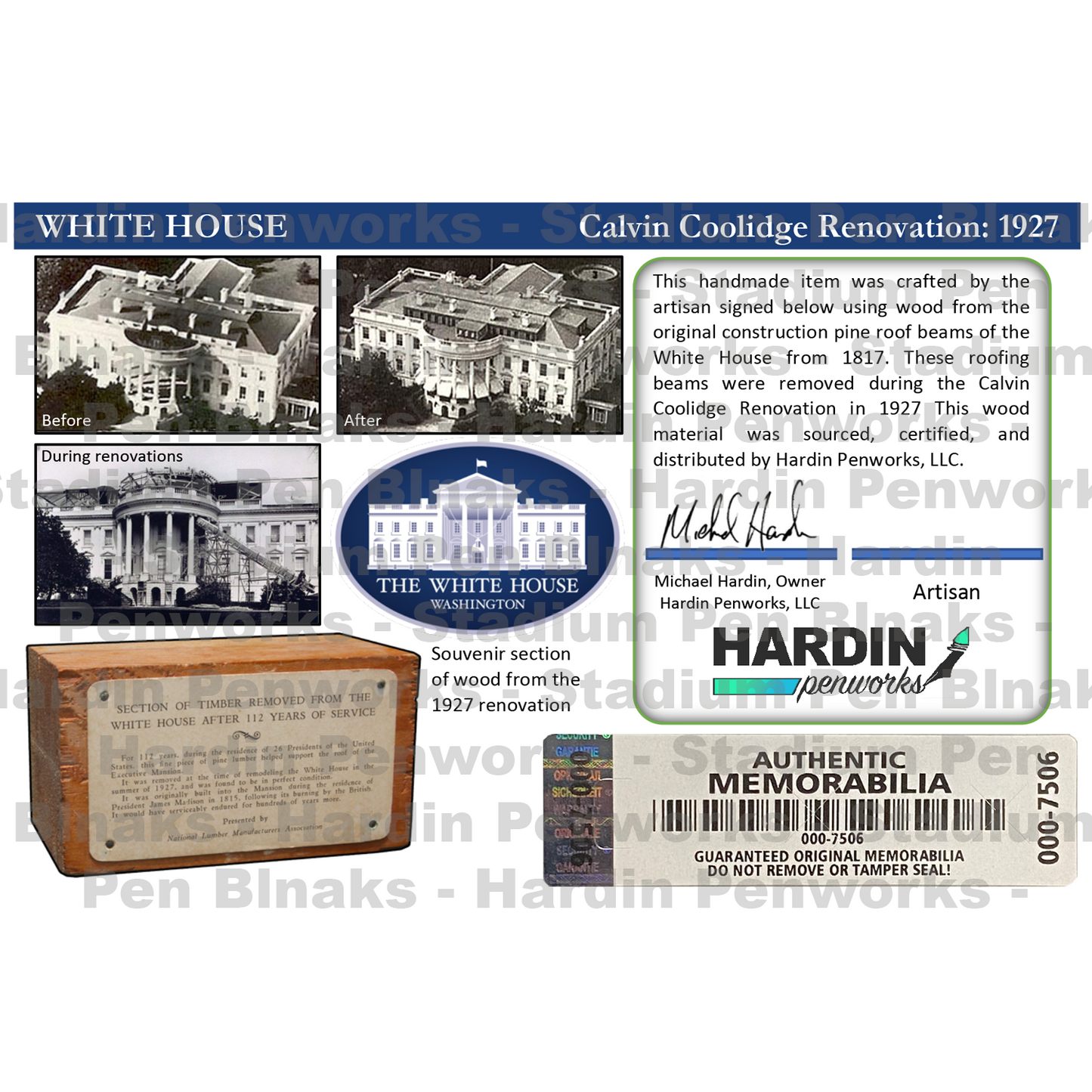
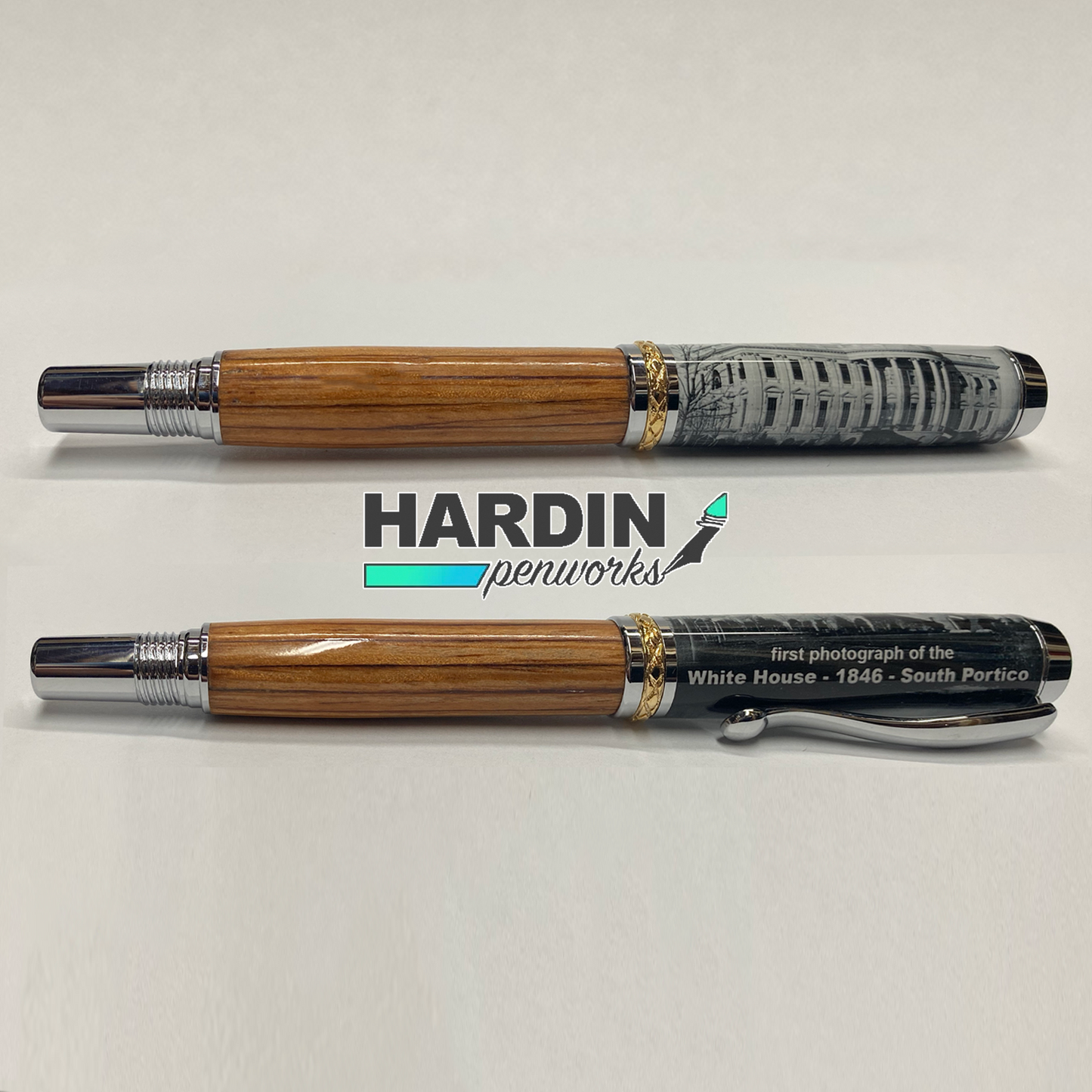

The lower piece was not a solid piece, but several small pieces glued together. The initial order was placed April 2, the order was finally completed late May. Many attempts to communicate with little to no results. Customer Service has dramatically dropped since I last used approx 2 years ago.
The pre-tubed White House blank turned smoothly and made a beautiful pen.

Turns amazing and is smooth as butter. Super excited about it and looks good.








